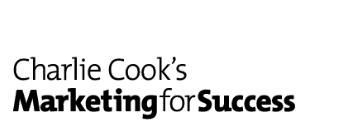You’re at a networking meeting and someone asks for your business card. You hand them a fairly typical card with your company’s name, your name and title, and contact information on it. What happens next? Do they get in touch with you? Do they become a client?
Nine times out of ten, the conversation ends when you hand someone you’ve just met your business card, and you never hear from them again. Wouldn’t you like to use these opportunities to generate interest, get a conversation going and have prospects contact you?
All of your marketing materials should be written and designed to prompt prospects to take action.
When you meet potential clients or customers, whether in person or through your brochure or web site, you want to lead them to ask you how you can help them and to call or email you later for more information. A typical business card does neither of these things.
You don’t have much real estate on a business card to work with, so use it well. Start by looking at the basic elements of your card.
Most business cards include titles. Your card may say, “Broker”, “Consultant”, or “Vice President”. What does this tell prospects about what you can do for them? Titles only give people a vague idea of what you do and rarely explain how you help people. If you include a title on your card, make it descriptive of your role in the company or your work with clients.
Instead of or in addition to your title, put your small business marketing message on the card.
This is a one-sentence description of how you actually help clients. When prospects read your card, they’ll quickly learn the problems you solve, and they’ll want to know how you can help them or someone they know. Your card then becomes a catalyst to conversation and gives you an opportunity to learn more about this prospect’s needs.
Another way to use your business card to pique prospects’ interest is to include an offer on the back. You might offer a free report or guide of interest to your target market.
For example, if you are a real estate agent you could offer an article on “10 Simple Ways to Increase the Value of Your Home”, available on your company’s web site through the link provided. When prospects visit the site, ask them to provide their name, email address and phone number, and then deliver a well-written and informative article.
The first step is to get a prospect’s attention and their contact information. Then you can stay in touch with them on a regular basis, offering more helpful ideas and information about your services. Building relationships in this way is well worth the additional cost of printing on both sides of your cards.
Before you rush to redo your business card, you’ll want it designed so it is easy to read and moves your prospects to contact you. If you want it to look professional, hire a graphic designer to help put your marketing objectives into print.
Stop exchanging business cards as a ritual and start using your card to attract new clients.
Reconsider your title and include your brilliant small business marketing message. Add a free offer your prospects can’t refuse. Your business card will help you start conversations, generate more leads and grow your business.
| Tweet |
